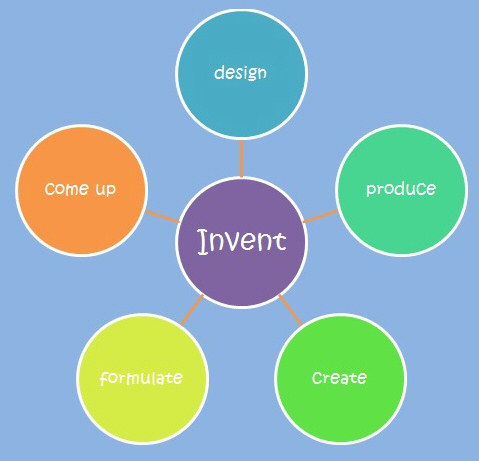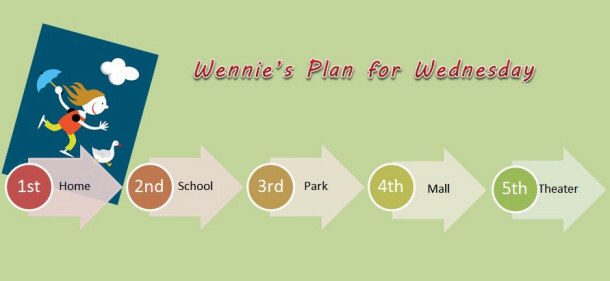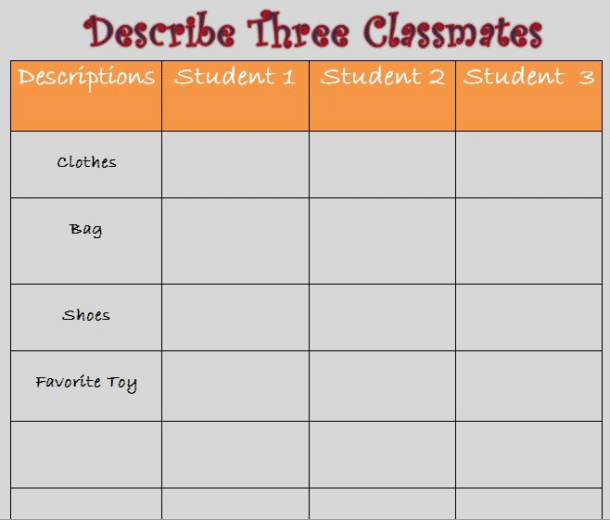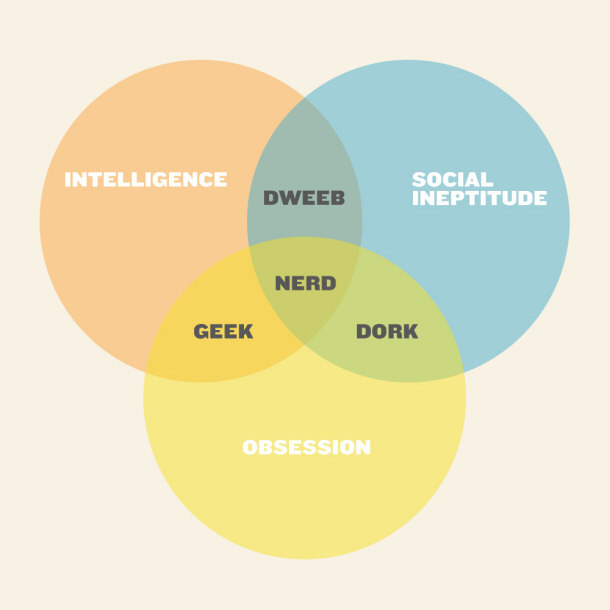*** This article I have written some years ago was originally published here.
Using graphic organizers in the classroom aides teachers in making concepts easier to grasp to students about topics they need to study. Education in the 21st century made learning even more fun with the integration of new study techniques. Instead of traditional note-taking, students are now able to study using visuals like diagrams or webs. With many students falling under the category of visual learners, graphic organizers play an essential role in the classroom. Considered as one of the most effective strategies for teaching and learning, graphic organizers can be used in many different areas of the curriculum. This is because it enables broad topics to be easily broken down into specifics.
What is a graphic organizer?
Graphic organizers are tools used to show connections between concepts. A spatial arrangement of ideas, it helps learners reduce broad topics into more specific and easier concepts. Also known as concept maps or diagrams, it serves as a visual aid to facilitate comprehension and connection between concepts. It helps facilitate understanding by providing a semantic association between ideas or thoughts, making the learner able to visualize ideas. Since these tools can be used in many areas of study, it is helpful to students of all age groups.
Graphic organizers are tools used to show connections between concepts. A spatial arrangement of ideas, it helps learners reduce broad topics into more specific and easier concepts. Also known as concept maps or diagrams, it serves as a visual aid to facilitate comprehension and connection between concepts. It helps facilitate understanding by providing a semantic association between ideas or thoughts, making the learner able to visualize ideas. Since these tools can be used in many areas of study, it is helpful to students of all age groups.
Types of Graphic Organizers
Basically, graphic organizers used in the classroom organize ideas into concepts, sequence, dates or groups. Since it is constructed mostly from ideas contributed by the students, recalling information is simple. The most popular types of these learning tools are the web, map, plots, and Venn diagram.
1. Web - This is usually utilized to give definitions, examples or list of related ideas:

2. Map - This is generally used to show the sequence of events, relate characteristics, classifications, similarities, and descriptions:

3. Chart - This is commonly used to illustrate cause and effect, enumerate characteristics or descriptions and identify parts of a broader topic:

4. Venn Diagram - This is used to compare and contrast attributes of two things:

Benefits of Graphic Organizers
Here are the top five reasons graphic organizers are beneficial in the classroom:
1. Engaging for learners. According to recent studies, students learn more when the stimulus is visual. With majority of students considered visual learners, making use of graphic organizers help put together thoughts. Since there are several types to choose from, students won’t get tired of learning a variety of content.

In addition to attractive designs, graphic organizers offer the chance to complete tasks hands-on. This enables them to break down abstract concepts into simpler ones, making classifications and communication even less challenging. As they get themselves familiar with this educational design, they can function independently after several teacher-guided activities.
 2. Aid the thinking process. When students are in charge of organizing information, they do not only develop skills in establishing relationships between concepts but are also giving brains a stretch. When expose to different types of graphic organizers, they devise ways to attack the demands of the task at hand. As they deepen understanding of concepts, lessons are internalized, making it a part of schema. As ideas are visually represented, brainstorming is made easier. Additionally, as students take an active role in processing information, it gives them the opportunity to learn from their mistakes and discover their preferred learning style.
2. Aid the thinking process. When students are in charge of organizing information, they do not only develop skills in establishing relationships between concepts but are also giving brains a stretch. When expose to different types of graphic organizers, they devise ways to attack the demands of the task at hand. As they deepen understanding of concepts, lessons are internalized, making it a part of schema. As ideas are visually represented, brainstorming is made easier. Additionally, as students take an active role in processing information, it gives them the opportunity to learn from their mistakes and discover their preferred learning style.
3. Improves comprehension. Truly, “a picture paints a thousand words” as even the most complicated idea can be broken down into simpler ones by simple illustrations. Textbooks used in the basic education level have a lot of pictures because imagery enhances understanding. As effective study guides, graphic organizers provide students with general overview of the topics they study, their patterns, and the facts related to the concept being discussed in the classroom.


This can enhance understanding and memorizing. In reading classes, comprehension can be out of reach as words may be too difficult, or sentences are complex. With this, students find it hard to figure out how each part completes the others and vice versa. This problem is, fortunately, addressed by graphic organizers.
4. Foster retention. The human mind stores and organizes information learned. When ideas are understood, it is easily retained in the mind, making it accessible for use when needed. With graphic organizers providing the visuals for a mental storage, remembering is supported and critical thinking skills are developed as sets of retained information are assimilated. As they visualize what was learned, manipulation of ideas that made up the schema is easy.

This in turn will aid them in expressing thoughts into words. Spatial learning tools are known to provide opportunities for extracting and remembering information. Graphic organizers are considered a type of scaffolding for learners to establish relationship between what was previously learned and the new materials being studied.
5. Helps improve achievement. In 2007, a study by Anne Ford mentioned that “learning disabilities cannot be cured, but they can be treated successfully” as she saw the role played by graphic organizers in improving the achievement level of students with learning disabilities. Further, other studies suggest that the demand for students to master so much information about subject areas hinders the achievements of even the average student. Because students, both regular and those with learning difficulties, are participants in finding connections between concepts, facilitation of knowledge acquisition was improved.

In a study conducted by Barron and Stone, it was presented that those learners with exposure to graphic organizers as study aids were able to manipulate test on vocabulary with ease. Additionally, it stated that graphic organizers are facilitative when students trained to use them were to apply what was learned from explicit instructions.
Conclusion
Lines, charts, maps, or webs that represent ideas may look elementary at first glance, but graphic organizers provide frameworks for connecting new ideas with schema. There are compelling reasons why using graphic organizers in the classroom is beneficial. First, it makes materials easier to comprehend and remembered than when lessons are just dictated or copied. It makes ideas more specific, giving the students a chance to grasp concepts at their level of understanding. When they are able to keep a clear mental picture of the topic discussed, it aids them in explaining what they have mastered orally.
Lines, charts, maps, or webs that represent ideas may look elementary at first glance, but graphic organizers provide frameworks for connecting new ideas with schema. There are compelling reasons why using graphic organizers in the classroom is beneficial. First, it makes materials easier to comprehend and remembered than when lessons are just dictated or copied. It makes ideas more specific, giving the students a chance to grasp concepts at their level of understanding. When they are able to keep a clear mental picture of the topic discussed, it aids them in explaining what they have mastered orally.

Second, visual representations of topics are powerful ways to assist learners in understanding. As the exposure to many types of graphic organizers continues, students can exhibit the depth of their understating of a topic by the complexity of relationships or connections illustrated on their versions of the visual learning aid. Third, it trains students to make use of strategies that fit their learning preferences. When they master patterns of breaking down ideas and establishing connections, thinking is enhanced and learning is made possible no matter how difficult a concept is. Additionally, the quality and creativity of the student-made graphic organizers can indicate how well the student grasps the ideas of learning, indicating how much potential is present.
No comments:
Post a Comment